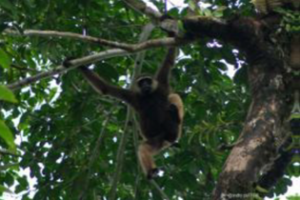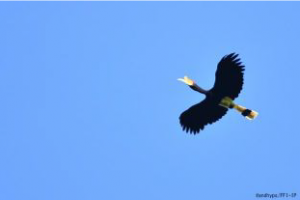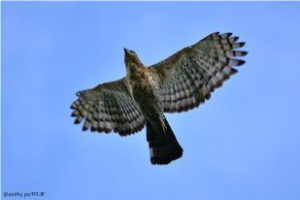Laman Satong village forest, Ketapang district, West Kalimantan, lies between Gunung Palung National Park and Gunung Tarak (watershed) protection forest to the northwest and two palm oil plantation concessions to the southeast. Situated in a lowland hilly area (elevation below 100m asl), the village forest is part of the catchmentarea for the Satong and Tolak rivers flowing south to nearby peat swamp areas and the coast. The village forest area comprises of two hills, Bukit Tatas and Bukit Kaderon, divided by Manjau subvillage housing settlement along a gravelled road. Springs in these forests are the main sources of running water for the villagers. Some spots in the forest are sacred groves, where religious rituals are performed.

The village forest is dominated by secondary forest, agroforest, and scrub. In the past the forest was either logged or cleared for upland rice fields, after which the land was either transformed into mixed agroforest (rubber, fruit and timber trees) or left fallow for several years then cleared for a new cycle of upland rice cultivation. Today, under customary rules, clearing new forest is prohibited. Tree planting and/or upland rice field cultivation of the fallow land (bawas) is encouraged, but is often constrained by of shortage family labour and/or good quality planting materials. Labour exchange is often performed to cope with cash and labour shortages.
The secondary forests and mature agroforests are home to protected Bornean species of mammal, bird, amphibians and reptiles, and tree (dipterocarps). A total of 14 mammal, 158 bird, 24 amphibian and reptile, and 48 tree species were recorded within the project area based on a baseline participatory biodiversity assessment conducted in 2011-2012. Many of these are endemic and listed on the IUCN Red List, including the Endangered Bornean white-bearded gibbon (Hylobates albibaris), and the Critically Endangered rusty brown dipterocarp tree (Hopea ferruginea). In addition, six of eight possible hornbill species known as forest health indicators and forest dwellers were recorded. Besides hornbills, others forest dwellers such as the great argus (Argusianus argus), the Malayan box turtle (Cuora amboinensis), and the Southeast Asian soft-shell turtle (Amyda cartilaginea) were recorded within the project area.



